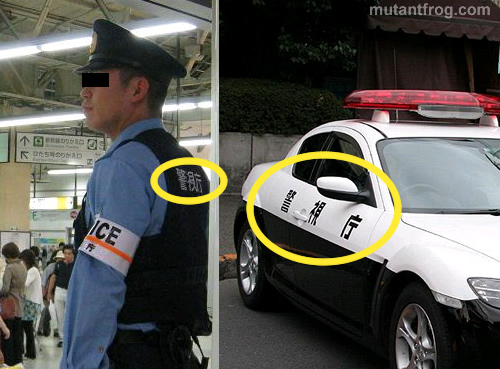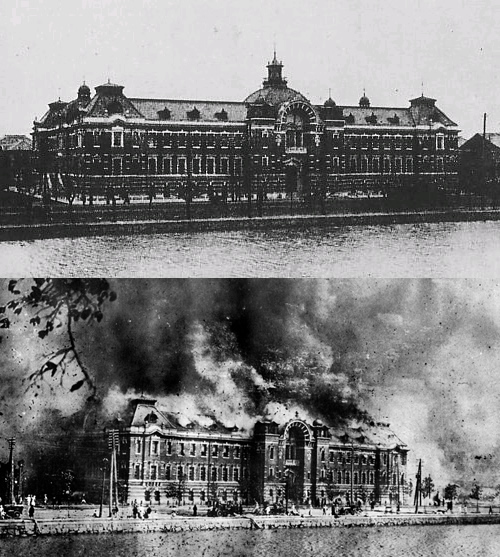During the very early stages of last month’s disaster I wrote A Note on Energy Conservation, in which I explained why, energy conservation in western Japan would have no immediate effect in relieving the shortage in eastern Japan. This is because Japan’s electrical grid is, for historical reasons, separated into a 60hz grid (same as North America) in the western half of Japan and a 50hz grid (same as Europe) in the eastern half.
I have been collecting links related to the energy situation and several other aspects of the ongoing crisis and recovery efforts and will probably be blogging quite a bit on such topics, but for now I want to just post translations of a series of brief comments on energy conservation in Kanto from Tokyo Vice-mayor Inose Naoki (who I believe will remain in his job allegedly doing most of the real work serving under Ishihara following his unfortunate reelection) that he tweeted a week ago.
#1: The pachinko industry said in a protest message to Governor Ishihara that “the maximum power usage of their 4000 game parlors in the Tepco region” is no more than 840,000 kilowatts” and this is where I learned precise numbers. Before this the only data I had was regarding a sort of “peak velocity” of 320,000 kilowatts. Since Toei and Metro [Tokyo’s subway systems] together are a maximum of 360,000 kilowatts, this is pretty big.
#2: Pachinko parlor electricity consumption is 40% air conditioning, 30% pachinko machines, 20% lighting. To reduce the gap in power supply during summer peak demand time, [we] must reevaluate [our] lifestyles. To speak half-jokingly and half-seriously, the pachinko industry must themselves come forward with plans such as operating only at night, or running without their coolers on during the day.
#3: Drink vending machines use 190,000 kilowatts. The real number may be even higher. Vending machines are refrigerators. The industry is voluntarily engaging in self restraint to halt the cooling function between the hours of 1 and 4 but do we really even need it during the day time? At the very least we do not need them next to a convenience store. Conserving energy at night has no relation with saving energy during peak hours.
#4: Energy Conservation Minister Renho says “vending machines are a large proportion of the drinks industry’s sales” and expressed a “contradictory point of view” regarding industry self restraint, saying “the industry is working to lower energy consumption” (Kyodo). She does not understand the meaning of revising our lifestyles to overcome summer. There is no need to put refrigerators on the street in order to raise the sale price to ¥150 from the ¥90 it is in a supermarket.
#5: The DPJ administration has finally decided to issue government directives, and although there are regulations for both industry specific controls and total volume controls [on energy consumption], they have only issued total volume controls. By issuing only total volume controls, it will only target electricity contracts of 500 kilowatts and up (large offices), which is only 1/3 of the total. The other 70% is voluntary restraint, and cigarette vending machines fall into that category. This is because they are not using industry specific controls.
#6: Tokyo is a commuter city. Toei and Metro together use a maximum of 360,000 kilowatts during rush hour. Outside of morning and evening rush, they are saving power by reducing service, reducing lighting/AC in stations and cars, stopping one set of escalators where there are two, etc. And compare this with how the pachinko or drinks vending machine industries – which add up to 100,000 kilowatts, are reacting.
#7: Cigarette vending machines are not refrigerators. Beverage vending machines are refrigerators, and guzzle 190,000 kilowatts. It may even be higher in reality. I previously had a number for the pachinko industry of 320,000 kilowatts, but their assertion that it is “no more than 840,000 kilowatts” gave me the real figure. The output of Reactor #1 at Fukushima Daiichi was 460,000 kilowatts. More or less.
#8: The concern is what to do about power use at peak hours. Late at night is not a problem. I have set the hot water heater on the bath in my working area to use electricity at night. I also installed solar panels one year ago. Even though Tokyo has been trying to encourage them the installation rate is low and I put them in myself. Personal experiences are in my book on working as Vice-governor.
#9: Roppongi Hills produces all of their own power. They have a contract with Tepco for backup. This is opposite the usual pattern. In the future, power generation will no longer be monopolized by Tepco. Factories had already begun installing their own power generation but it was expensive and efforts did not move forward. With the nuclear accident, people will start to question the real costs of power generation.
#10: Beverage vending machines. The Tokyo Prefectural Assembly DPJ proposed halting the coolers not from 13:00-26:00 but from 10:00-21:00. Energy Conservation Minister Renho is arguing for something different. In this proposal the Tokyo Assembly DPJ mistakenly wrote that vending machines use 110,000 kilowatts and the cool beverage industry corrected them saying it is actually 260,000 kilowatts. Thanks to that, I now know the real figure.
#11: Changed in electricity consumption. Proper mastery of a proposition is a precondition for linguistic skill. If we look back, the 1990s are not so long ago. Since the 1990s, GDP has not risen, but electricity usage has increased. Therefore, we need to reassess our lifestyles over the last 10-15 years. Why has GDP not risen even though we use more electricity?



